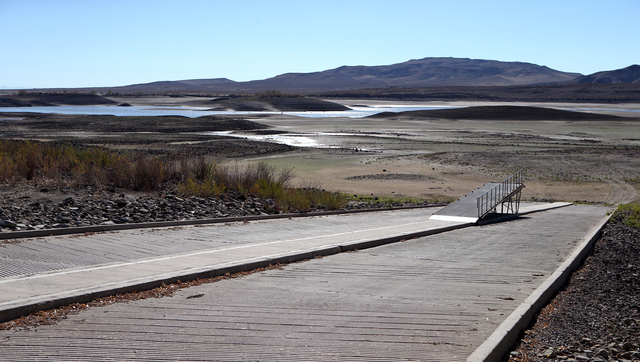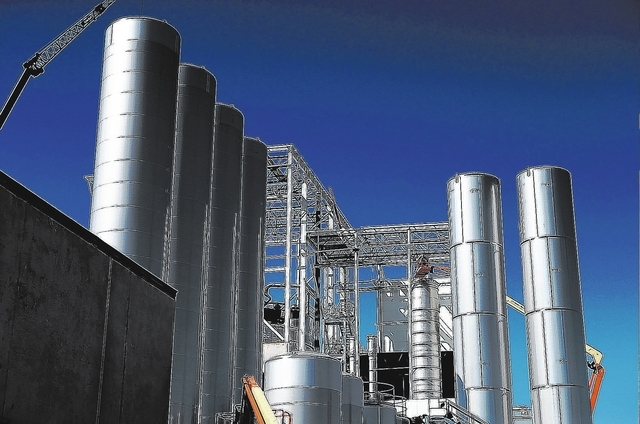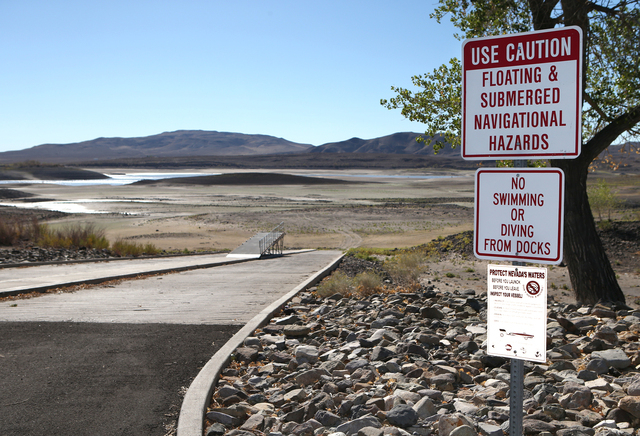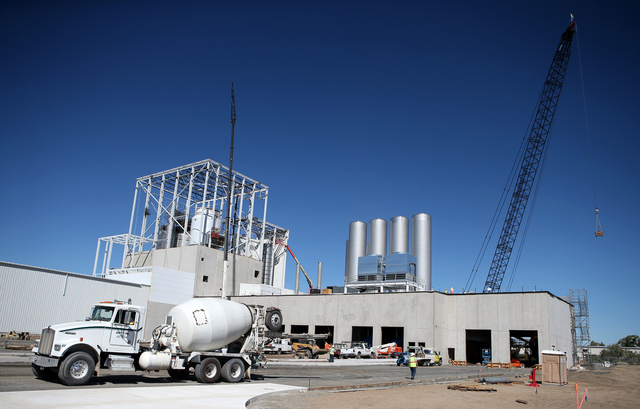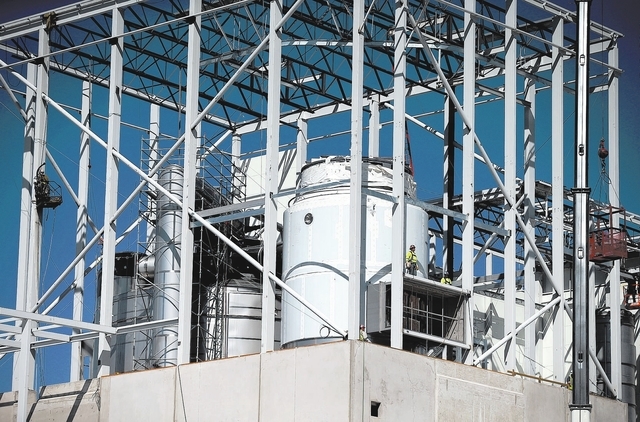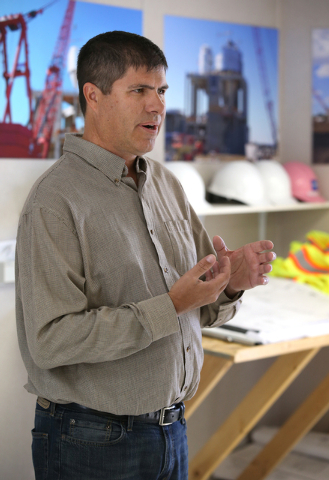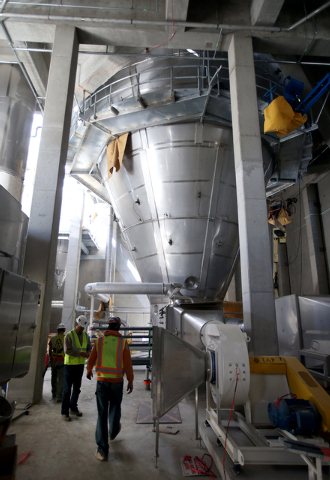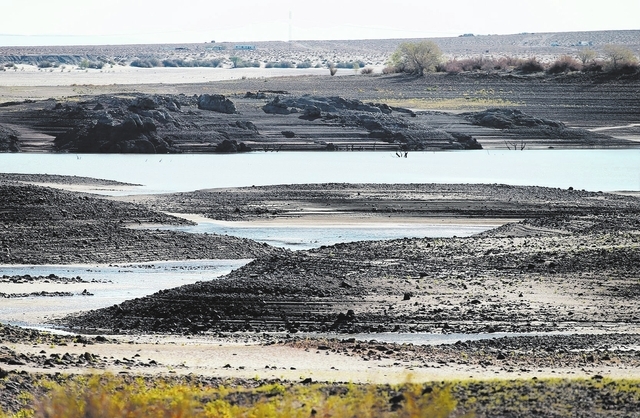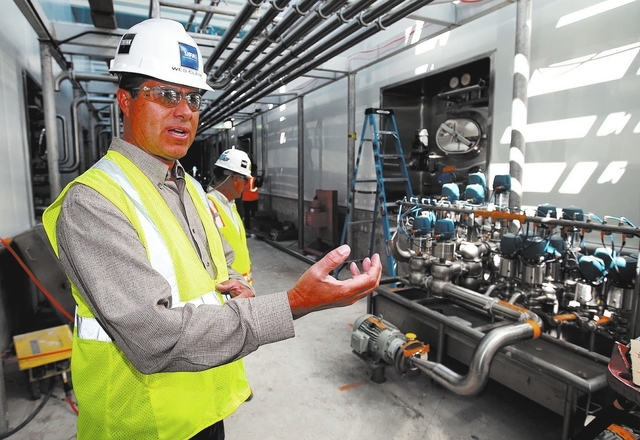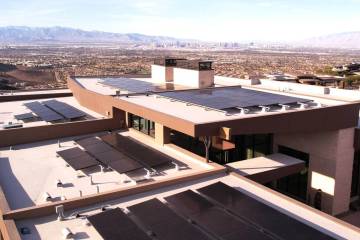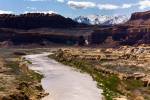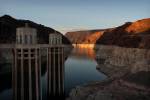Cow power: New milk production plant could provide economic boost
When talking about cows or agriculture in Nevada, people may think of milk, beefsteaks or piles of manure rather than about a farmer becoming wealthy.
But the $85 million Dairy Farmers of America milk processing plant under construction here could bring the biggest economic boost ever for farmers in Northern Nevada.
Farmers might have to double or even triple their dairy herds in coming years to meet the demands of the plant opening in March.
About 780,000 pounds of milk are now produced in dairies in this area, but the facility will handle 2 million pounds of milk a day, and could be expanded as demand warrants.
All milk delivered to the plant will be powdered for export to China. The powdered milk, which weighs about 7 percent as much as liquid milk, will be trucked to the Port of Oakland (Calif.) to be loaded onto ships.
There will be no manure, or cows either, at the plant on a 38-acre plot in the New River Industrial Park east of Fallon. The plant resembles a Cape Canaveral launch pad, and nothing about its appearance brings thoughts of dairy farming.
The facility manager, Wesley Clark, has hired about half of his 45 plant employees and has them in four months of training. They will be paid $17 to $22 per hour. The Dairy Farmers of America, under the name Quail Hollow Farm, received $6.2 million in tax incentives from the Governors’ Office of Economic Development. That’s $137,000 a worker, although economic development officials in Churchill County see 1,600 to 2,400 jobs in all industries created because of the plant.
“Our No. 1 priority is hygiene,” he said. “They have to remember that this milk may go to feed a baby.”
Workers will wear what look like hospital garments with special booties. Some will wear masks. The air in the plant must kept superclean.
The truck drivers who will deliver milk to the plant day and night won’t be allowed inside the facility.
“They may have manure on their boots and we don’t want manure in the plant,” Clark said.
The only sounds during a recent tour were being made by 200 BIG-D construction workers and their equipment. The workers had to shout to be heard above the noise. If cows are mooing anywhere close, they cannot be heard.
2,000 NEW JOBS EXPECTED
“The ripple effect is going to be huge,” said Lynn Hettrick, the deputy state Agriculture Department director who until recently was executive director of the state Dairy Commission.
Although the plant itself will have a small workforce, Hettrick estimates it will result in creation of as many as 2,000 jobs. The 22 dairy farms in Churchill and surrounding counties will expand, hay producers will put more land into production, more truck drivers will be needed, farm implement stores will add staff, more tractors and trucks will be purchased, more veterinarians will be needed. This will lead to the hiring of additional workers to provide meals and groceries.
Under the name Quail Hollow Farm, the Dairy Farmers of America received $6.2 million in tax incentives from the Governors’ Office of Economic Development. That’s $137,000 per job, and some who must be imported from other states because of the need for experienced workers.
Hettrick said a new 3,000-cow dairy farm already is planned for Smith Valley, near Yerington. Two closed dairies are reopening and 15 have announced expansion plans.
The only limitation might be water. Water shipments to Fallon farms have been cut this fall after two straight years of below-normal precipitation in the mountains around Lake Tahoe.
Nevada now has only 28 dairies with about 33,000 dairy cows, about 10,000 of them in Southern Nevada. While dairy farms in the East might have just 140 cows, those in the West average 1,400 — and in some areas dairies have become Confined Animal Feeding Operations, or CAFOs, housing tens of thousands of cows in close quarters.
Each cow produces about 70 pounds of milk a day, so they must constantly eat and drink. That could be a problem.
“I have never seen it so dry,” said Dayton resident John Peccole after walking across the lake bed at the Lahontan Reservoir, a primary source of irrigation water for Churchill County farmers.
The reservoir usually is a fun place for boaters, swimmers and picnickers. The water originates in the Sierra Nevada, flowing down the Carson River where it’s stored behind an early 20th-century dam.
Fallon dairy farmer and Churchill County Commissioner Pete Olsen doesn’t sound worried about the water situation. He said farmers this year still received 75 percent of their normal allotments, and the valley remains green.
Olsen then rattled off statistics on how farms have received ample water at least for the past 20 years. This year hopefully was an anomaly, the worst water year since 1992.
“If the past is any predictor of the future, we shouldn’t have a problem,” he said. “I am not concerned.”
FARMER-OWNED COOPERATIVE
The Dairy Farmers of America is a cooperative of farmers throughout the country. All Northern Nevada dairy farmers are members. They have contracts with Model Dairy, the commercial milk company in Reno, to supply milk for consumers in Northern Nevada. That contract will be honored, Olsen said.
The farmer-owned cooperative readily admits in news releases that it chose Fallon for its dry milk plant because of Nevada’s lack of corporate, inheritance, personal income or business inventory taxes, and for its agriculture-friendly regulations, low feed costs, ample water and climate conducive to agriculture.
The cooperative’s goal is to find markets and adequate milk prices for dairy farmers so they do not have to worry about selling the milk they produce.
Olsen also is the Western region representative for the Dairy Farmers of America and had a lot to do with bringing the powdered milk plant to Fallon. He prefers to say the plant has “many fathers.”
His family has been in the dairy business since 1915. One of his sons operates a 500-cow dairy near Fallon. The family has 1,700 acres, mainly in hay.
Olsen said he already buys hay from Nevada farms within a 150-miles radius of Fallon.
“Every farm has a different strategy,” he said about their plans to acquire water needed to expand.
Others are less optimistic.
“If there is not enough water, it will affect everybody,” said state Sen. James Settelmeyer, a Carson Valley cattle rancher who represents Churchill, Douglas and other farming areas. “They’d have to buy hay from other states and pump more groundwater.”
Marty Owens, the U.S. Department of Agriculture statistician in Nevada, said much of the hay produced in Nevada is sold to dairy farms in California. With the opening of the dry milk plant, hay will remain in Nevada.
“Hay prices will rise,” he said. “This is going to be a great boom, particularly for Fallon and Yerington.”
Doug Busselman, executive director of the state Farm Bureau, said the business climate might not be good for dairy farmers if state voters in November 2014 approve the Nevada State Education Association’s 2 percent business margins tax.
Even businesses that aren’t making a profit could be forced to pay the new tax since not all items are exempted before it is calculated.
“It’s a dark cloud on the horizon,” Busselman said. “Dairy people don’t make a profit every year, yet because of the revenue they generate they would have to pay the tax regardless.”
Contact Capital Bureau Chief Ed Vogel at evogel@reviewjournal.com or 775-687-3901.



